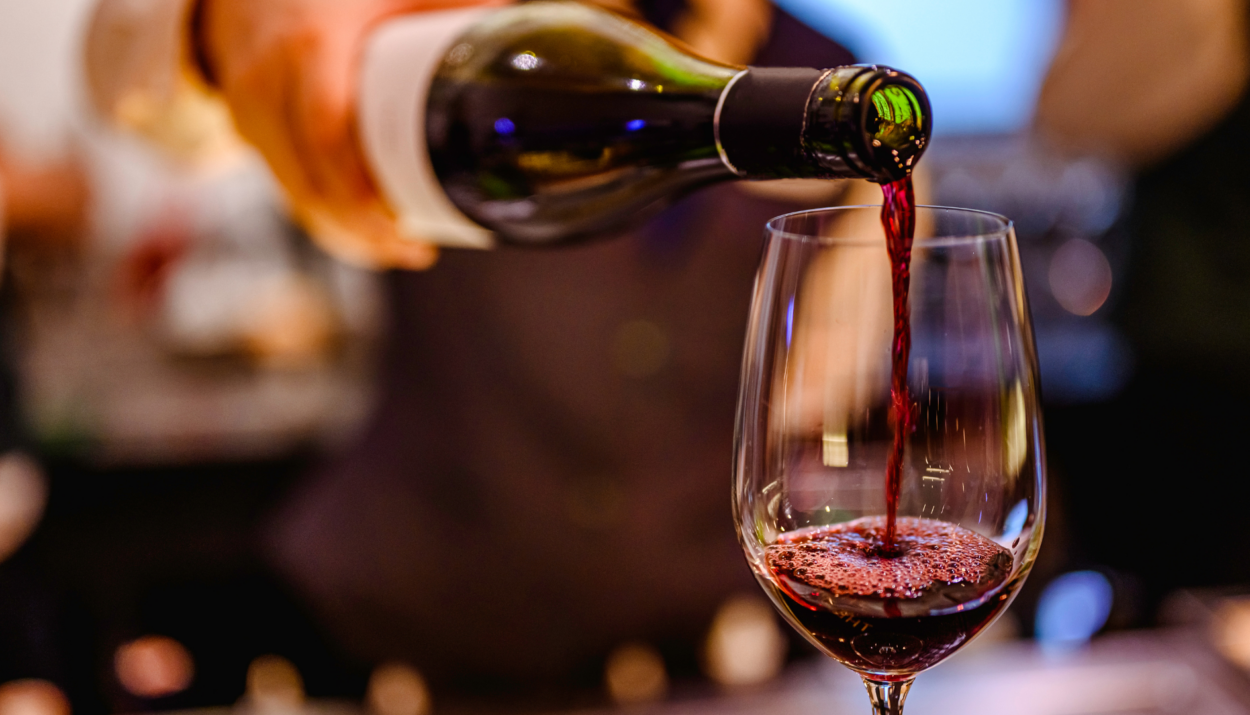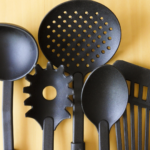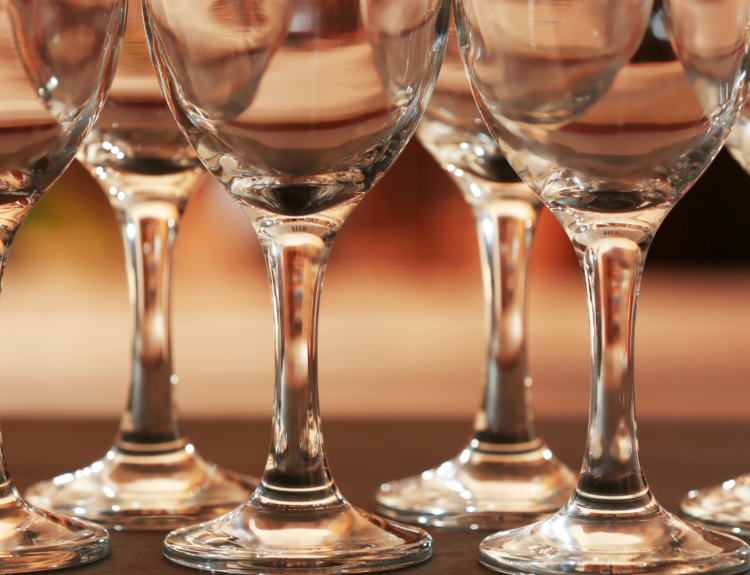Wine glasses look elegant and have delicate glasswork. They are crucial in enhancing the aromas, flavors, and overall tasting experience of wine. But how much wine can each type of glass hold? It’s important to know if you want to elevate your wine-drinking experience or plan a dinner party. In this blog, we will explore the world of wine glasses. We will learn how much wine each type can hold and why it’s important to choose the right glass for different wines.
Understanding Wine Glasses: An Overview
Before we dive into the details, let’s start with a brief overview of wine glasses. Over the centuries, wine glasses have evolved, reflecting changes in wine culture, production, and the appreciation of wine. The design of wine glasses has been influenced by traditions, innovations, and regional preferences, resulting in a wide array of shapes and sizes. Wine glasses play a vital role in enhancing the aromas and flavors of wine, allowing wine enthusiasts to fully experience and savor the nuances of their favorite varietals.
History and Importance of Wine Glasses
Wine glasses have undergone significant changes over centuries, shaped by various traditions, innovations, and regional preferences. They are integral to the wine drinking experience as they enhance the aromas and flavors of wine, reflecting the evolution of wine appreciation and connoisseurship. The history of wine glasses is intertwined with the development of wine culture and production, refining the shape and material to optimize the tasting experience.
The significance of wine glasses lies in their ability to showcase the art and science behind wine drinking and enjoyment. Understanding the history behind them provides insight into the rich tapestry of this craft. Wine enthusiasts can appreciate how different shapes and sizes of glasses affect how each varietal tastes, emphasizing that a good glass is just as important as a good bottle. Additionally, it’s worth noting that modern advancements in technology have led to groundbreaking materials being used in glass manufacturing for even better drinking experiences. Ultimately, investing in quality wine glasses can help heighten one’s appreciation for this ancient beverage while also showcasing an individual’s sophistication and taste.
How Wine Glasses Influence the Taste of Wine
Wine glasses are crafted to direct wine to specific areas of the tongue and palate, enhancing its taste. The shape of a wine glass can impact the perception of acidity and tannins in wine, either elevating or diminishing them. Furthermore, wine glasses can alter the temperature and aeration of wine, ultimately influencing its overall taste profile. By using the right wine glass, the unique characteristics of different wine varietals can be accentuated, enriching the tasting experience. Ultimately, the design of wine glasses aims to maximize the expression of aromas and flavors in wine, ensuring that each sip is a sensorial delight.
Types of Wine Glasses and Their Capacities
When choosing the right wine glass for different wines, it’s essential to consider the types of wine glasses and their capacities. Red wine glasses, white wine glasses, sparkling wine glasses, and dessert wine glasses each have specific capacities designed to enhance the characteristics of the wine. Understanding these variations can significantly impact the overall wine-drinking experience and ensure that the aroma and flavors are enjoyed to the fullest.
Red Wine Glasses and Their Capacity
Red wine glasses are crafted with a larger bowl, allowing ample space for aeration and gentle swirling of the wine. Their capacity is tailored to accommodate the robust and intricate flavors of red wines. The shape of these glasses is meticulously designed to heighten the wine’s aromas and ensure a seamless pouring experience. With a focus on enhancing the overall structure and mouthfeel of red wines, their capacity guarantees a perfect pour for a truly indulgent tasting experience.
White Wine Glasses and Their Capacity
White wine glasses, with their smaller bowl, effectively maintain cooler temperatures and preserve delicate aromas. Tailored to highlight nuanced flavors, the capacity of these glasses promotes a balanced pour and optimal aeration for white wines. Serving as a refined and elegant vessel, they allow for precise amounts of wine to be enjoyed and savored. This design is essential for experiencing the full spectrum of aromas and flavors in a standard serving of white wine.
Sparkling Wine Glasses and Their Capacity
Crafted to preserve the celebratory effervescence of sparkling wine, these glasses boast a narrow, elongated shape that captures and enhances the wine’s bubbles and aromas. Their design is dedicated to delivering a lively and joyous wine-drinking experience, allowing for an ideal pour that accentuates the wine’s unique textures and aromas. With a capacity tailored for the perfect serving size, sparkling wine glasses ensure a delightful and effervescent wine experience, making them an essential companion for special occasions and everyday indulgence.
Dessert Wine Glasses and Their Capacity
Dessert wine glasses boast a smaller capacity, perfect for highlighting the concentrated and intense flavors of dessert wines. Their design is specifically crafted to enhance the sweet and aromatic characteristics of the wine, offering an indulgent tasting experience. These glasses provide an elegant vessel for savoring the complexities of dessert wines and ensure a controlled and precise serving of these distinctive, rich wines.
Choosing the Right Wine Glass for Different Wines
Selecting the appropriate glass of wine significantly impacts the overall wine-tasting experience, optimizing the aromas, flavors, and mouthfeel of different wine varietals. Matching glasses of wine to specific wine types enhances the sensory and aesthetic aspects of wine appreciation, tailoring the experience to bring out the best qualities of different wines. Understanding the best way to choose the right glass of wine elevates the enjoyment and appreciation of wine, ensuring that each pour of wine is experienced to its fullest potential.
Factors to Consider When Choosing a Wine Glass
When selecting a wine glass, it’s crucial to consider how the shape and size complement the characteristics of the wine. Factors such as bowl shape, rim diameter, and glass material play a pivotal role in enhancing the wine-drinking experience. The varietal, aroma, and flavor profiles of the wine should guide the selection of the appropriate glass to ensure that it enhances the wine’s aromas and maintains temperature. Additionally, factors like wine type, occasion, and personal preference should be taken into account when choosing the ideal wine glass.
The Science Behind Wine Glass Sizes
Understanding the impact of glass size on the oxidation of wine, as well as the role of glass shape in enhancing wine aromas, is crucial for wine enthusiasts. The size of a wine glass can influence the rate at which wine oxidizes, impacting its flavor and aroma. Additionally, different glass shapes can either enhance or diminish the expression of specific wine aromas, affecting the overall tasting experience. Knowing the science behind wine glass sizes can significantly elevate one’s appreciation of different types of wines.
The Impact of Glass Size on Wine Oxidation
When choosing the right glass for your wine, it’s essential to consider how the size of the glass impacts the wine oxidation process. Larger glasses allow for more aeration, affecting how the wine oxidizes, while smaller glasses minimize oxidation and help preserve wine freshness. The speed at which wine is exposed to air, as well as the surface area of wine exposed to air, are determined by the size of the wine glass, thus influencing oxidation and ultimately impacting the aging process. Properly sized wine glasses play a significant role in controlling the rate of wine oxidation, maintaining the quality of the wine.
The Role of Glass Shape in Wine Aromas
The design of a wine glass greatly influences the concentration and dispersal of wine aromas, tailoring to specific bouquets. By directing the aromas towards the nose, it enhances the overall tasting experience. Moreover, different glass shapes emphasize particular aromas, significantly impacting the perception of flavors. Understanding the impact of glass shape on wine aromas is crucial for fully experiencing the nuances of wine.
Practical Tips for Measuring Wine in Glasses
When measuring wine in glasses, it’s essential to understand the standard serving sizes. A standard white wine glass usually holds around 8 to 12 ounces, while smaller glasses may hold 5 to 6 ounces. When pouring wine, remember that a standard pour of wine is around 5 ounces. For a wine tasting flight, a 2-ounce pour is common. Knowing these measurements can help you serve the right amount for different occasions and types of wine, ensuring an enjoyable drinking experience.
Standard Wine Pour: What It Means and How to Measure It
Measuring a standard wine pour, typically around 5 ounces, is crucial for adhering to serving size recommendations and promoting responsible wine consumption. Accuracy in pour measurement ensures quality tasting experiences and contributes to overall enjoyment of the wine. Understanding the significance of a standard wine pour is essential for maintaining the integrity of the wine and ensuring a moderate and enjoyable drinking experience.
Wine Tasting Pours: How They Differ from Standard Pours
When comparing wine tasting pours to standard ones, it’s crucial to note the differences in size. Typically, wine tasting pours range from 2 to 3 ounces, significantly smaller than standard servings. This smaller size allows for sampling multiple wines without consuming excessive alcohol. Moreover, it enables a more focused assessment of the flavors and nuances of each wine. By offering the opportunity to explore and compare different wine characteristics, tasting pours contribute to a richer wine-tasting experience. Understanding these distinctions is fundamental for enhancing one’s appreciation of wine.
Wine Etiquette: The Do’s and Don’ts of Pouring Wine
When pouring wine, it’s essential to hold the glass by the stem to avoid affecting the temperature of the wine with body heat. Additionally, always pour wine conservatively, filling the glass no more than halfway to allow room for swirling and to capture the wine’s aroma effectively. When serving multiple types of wine, it’s best to use smaller glasses for a standard serving or wine flight, ensuring that each pour of wine is appropriate for tasting without wasting any fine wine.
Correct Ways to Hold Different Wine Glasses
When enjoying a glass of wine, remember to hold red wine glasses by the bowl to enhance aromas. For white wine glasses, support them by the stem to preserve flavors and maintain the wine’s temperature. As for champagne glasses, hold them by the stem to maintain effervescence and prevent heat transfer. Understanding these techniques contributes to optimal wine enjoyment and ensures the preservation of wine characteristics and aromas.
The Art of Swirling Wine in the Glass
The gentle act of swirling wine inside the glass plays a crucial role in enhancing the overall tasting experience. By aerating the wine, it effectively releases its bouquet of aromas and intensifies the flavors, leading to a more nuanced and enjoyable tasting session. Additionally, the visually mesmerizing “legs” effect formed after swirling provides valuable insight into the wine’s richness and body, adding to the artistry of the experience. Mastering the swirling technique is the key to unlocking the full aromatic and flavor potential of the wine, making it an essential skill for any wine enthusiast.
Why is it Important to Know Your Wine Glass Capacity?
Understanding the capacity of your wine glass is crucial for a delightful wine experience. It allows for accurate measurements, appropriate serving sizes, and responsible consumption. Knowing the glass capacity helps in selecting the right glassware for different wine types, enhancing wine appreciation, and ensuring precise tasting accuracy.
How Does Knowing Your Wine Glass Capacity Enhance Your Wine Experience?
Understanding the capacity of your wine glass enhances your wine experience in several ways. It helps you serve the right amount, allowing for optimal tasting. It also enables proper aeration and swirling, enhancing aromas and flavors. Different glass sizes cater to specific wine types, influencing the palate perception. Additionally, knowing glass capacity aids in controlling alcohol intake, making the experience more enjoyable and responsible.
Frequently Asked Questions
What is the standard size of a wine glass?
The standard size of a wine glass typically ranges from 12 to 14 ounces. However, it’s important to note that wine glasses can come in various sizes and shapes depending on the type of wine being served. Some glasses designed for tasting purposes may hold only 4 to 5 ounces. Choosing the right glass size and shape can greatly enhance the flavor and aroma of the wine.
How much wine should I pour into a standard-sized wine glass?
To enjoy your wine to the fullest, it’s important to know how much to pour into a standard-sized wine glass. Typically, a standard-sized wine glass can hold around 12 to 14 ounces of wine. However, for optimal tasting, it’s recommended to fill the glass only one-third or half way full. This allows the aromas to concentrate and for the wine to breathe properly. It also prevents spills and gives room for swirling the wine around in the glass.
Can the size of a wine glass affect the taste and aroma of the wine?
The size and shape of a wine glass can indeed impact the taste and aroma of the wine. With a larger surface area, more oxygen interacts with the wine, enhancing its flavor. Additionally, the shape of the glass can emphasize specific flavors and aromas, enhancing your overall wine-drinking experience.
How does the shape of a wine glass affect the taste and aroma of the wine?
The shape of a wine glass plays a crucial role in enhancing the taste and aroma of the wine. A wider bowl allows for more air contact, intensifying the fragrance and flavor. On the other hand, a narrower rim concentrates the aroma, making it easier to appreciate subtle scents. Different wine glasses are designed to enhance specific varietals.
Conclusion
To have a complete wine experience, it is necessary to understand the capacity of wine glasses. Each type of wine needs a specific glass size to improve its taste, aroma, and overall enjoyment. Red and white wine glasses, sparkling and dessert wine glasses all have different capacities to match the unique characteristics of the wine. By selecting the right glass and pouring the correct amount, you can enjoy wine as intended. Next time you drink wine, appreciate the science behind glass size and relish every sip. Here’s to a fantastic wine experience!




